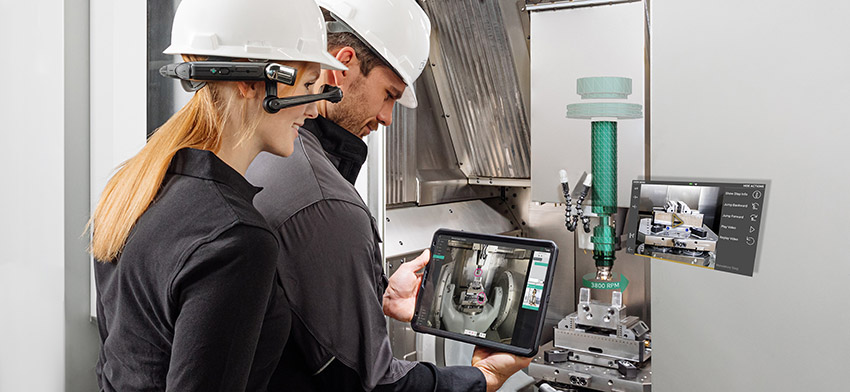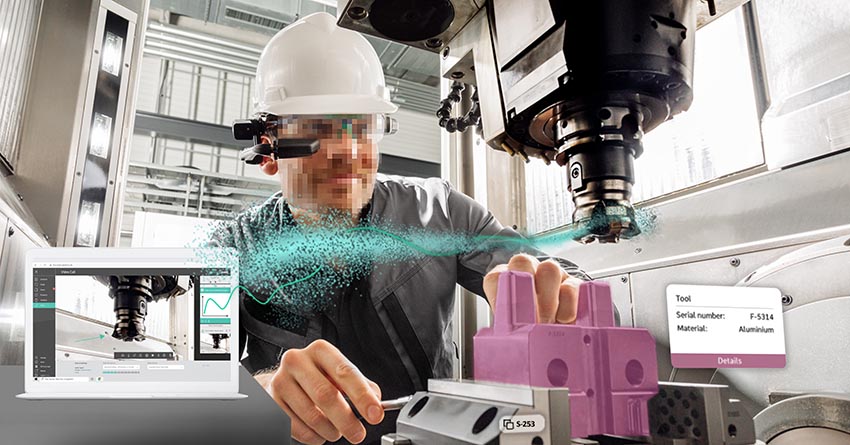oculavis is redefining the way, workers interact with machinery & equipment. The augmented reality platform oculavis SHARE brings that vision to life with remote expert support, augmented reality workflows and management features that covers use cases like remote customer support, global networking of manufacturing plants, remote audits or trainings. Started by three founders in 2016, the German company has grown to more than 60 employees in 2021 without raising any venture capital so far.
Interview with Martin Plutz, Founder & Managing Director of oculavis GmbH.
Easy Engineering: What are the main areas of activity of the company?
Martin Plutz: oculavis’ customers split up in two groups. Our primary customers are machine manufacturers who are using oculavis SHARE for end customer service to deliver machine related knowledge without the need to send a service technician on site. With remote expert support, technicians or service experts can stay in the (home) office to provide support on any place on earth. With the AR workflow module for step-by-step guidance and structured feedback possibilities standardized knowledge can be provided without always calling an expert. That enables customer self services and reduces the number of inbound service requests. In addition, workflows also enable other use cases like training new employees, using it for machine setup procedures in manufacturing or for inspections.
E.E: What’s the news for 2021 about new products?
M.P: oculavis SHARE is constantly being improved and innovated. The next major release in April 2021 introduces a new user role in the solution: with guest users, machine manufacturers can easily invite end customers by simply sending them a link that can even be opened on any smartphone or tablet with needing to install our mobile apps from Google Play or Apple App Store. This makes remote support even faster than it is already today with oculavis SHARE. Additionally, the new release introduces some new remote support call features like zooming and advanced annotations possibilities.
E.E: At what stage is the market where you are currently active?
M.P: COVID-19 has made the need for augmented reality powered support solutions more visible than ever before. Despite all the negative effects of the epidemic, the situation also offers opportunities for digital solutions. The need for augmented reality based remote support solutions such as oculavis SHARE is becoming more visible than ever, even if the sales arguments are usually in the increase of the overall equipment effectiveness (OEE), the saving of travel time and costs for service technicians and the enablement of digital business models in machine service. Not only because of the current situation, many of our customers have been using the remote support solution oculavis SHARE in combination with smart glasses, tablets or smartphones for a long time to connect production sites all over the world and to systematically share machine-relevant knowledge in order to unlock synergy potentials in globally distributed production networks. Companies such as Webasto, Brose or Thyssen Krupp have recognized long before the current corona epidemic what added value the use of augmented support solutions offers. The driving forces are rather the aforementioned savings and business model potentials, but also socio-economic trends such as the often discussed shortage of skilled workers, increasingly complex products and processes or digitalization per se.
E.E: What can you tell us about market trends?
M.P: Artificial intelligence (AI) is one of the hype topics that has been driving machinery and equipment manufacturers not just since yesterday. From the point of view of most machine builders, a major use case of AI is to make an estimate of the time of failure of a machine or specific components. This data-based prediction of machine states is usually referred to as predictive analytics, and the knowledge advantage that can be achieved can be used to optimize maintenance times, the replacement of spare parts or the early incorporation of planned downtimes into the end customer’s production planning and control. But what happens if problems occur during planned maintenance or replacement of spare parts? The employee from the end customer’s maintenance department may not know exactly how to replace a specific spare part or how to carry out maintenance correctly. Or the travel time of a technician of the machine manufacturer to the end customer takes so long or may not be possible at all due to travel restrictions that the time advantage of a prediction based on predictive analytics is simply eaten up. These examples make it clear that artificial intelligence can quickly result in demand for human action. This is exactly where Augmented Reality based solutions come in to optimize these human interactions, such as the manual maintenance or repair mentioned above.
Visual remote support with Augmented Reality annotations can be used, for example, to ensure that the expert of a machine manufacturer accompanies a complicated maintenance operation from a distance to ensure that the work is carried out correctly. If the machine manufacturer has already prepared the knowledge required for the maintenance in the form of instructions, the correct work processes can be displayed step-by-step on a tablet, smartphone or smart glasses to an onsite operator at the machine. This means that remote guidance by an expert can be replaced by self-guidance based on digital instructions and workflows for standardizable procedures. The challenge in this overall process is to make the right information available at the right time and in the right place. This can be achieved, for example, by integrating predictive maintenance with augmented reality systems. When the need for action is triggered by a data-based prediction, maintenance staff on site are informed by email or push notification, work through an Augmented Reality-based workflow for guided maintenance and, if necessary, consult a specialist from the machine manufacturer.
E.E: What estimations do you have for 2021?
M.P: I personally hope that 2021 will be the year mankind will remember as the starting point of the post COVID era. And I think that digital solutions like oculavis SHARE will stay, as the virus goes. The positive impacts of remote support services are worth it: saving travel related CO2, enabling new forms of work and transforming business models in conservative industries towards a digital future.





